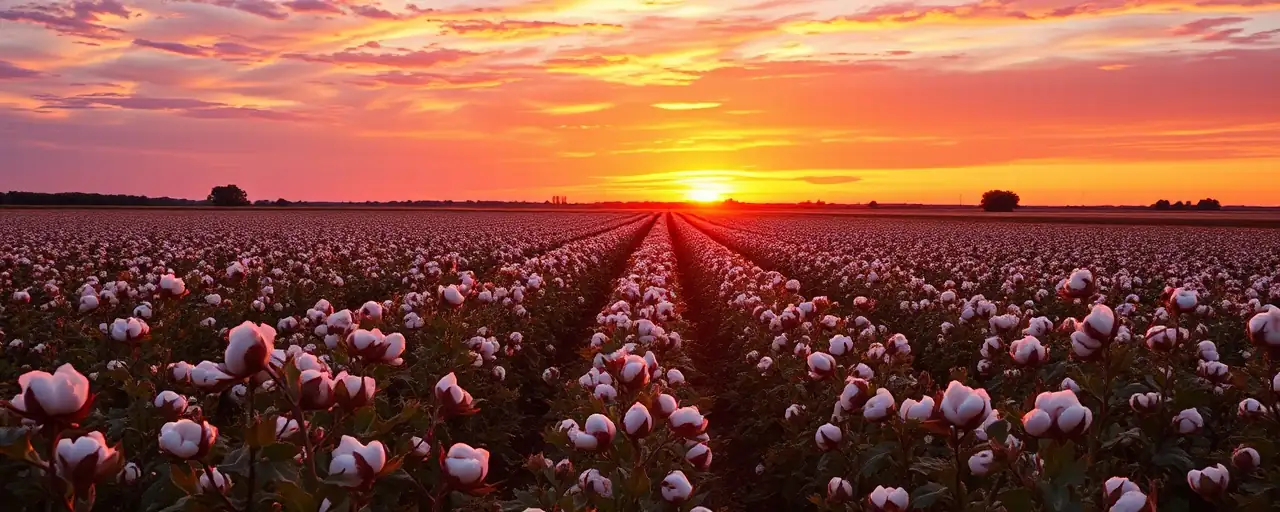A Tough Season for Texas Cotton
In the sprawling fields of West Texas, cotton farmers are grappling with a harsh reality. This year, the state’s cotton acreage is projected to plummet by 15.8%, down to 5 million acres. Low prices, rising costs, and persistent drought are squeezing producers, forcing many to pivot to crops like sorghum or corn. Texas, which grows 55% of the nation’s cotton, remains the heart of the U.S. cotton industry, but the economic strain is palpable.
The numbers tell a stark story. Cotton prices have fallen 28% since 2021, while costs for labor, ginning, and stripping continue to climb. For some farmers, particularly those relying on sprinkler-irrigated systems in the Panhandle, returns are negative when factoring in total costs. Yet the industry’s importance endures, supporting a supply chain that generates over $24 billion annually for Texas. From medical supplies to everyday clothing, cotton’s role in daily life is undeniable.
Amid these challenges, a recent visit by Agriculture Secretary Brooke Rollins to Lubbock highlighted both the resilience and the struggles of the region’s farmers. Joined by local producers and Texas Tech University officials, Rollins toured the USDA’s Cotton Classification Complex, a facility that grades 20% of the nation’s cotton crop. The visit underscored the critical role of federal support and innovation in keeping the industry afloat.
The USDA’s Role in Fair Markets
At the heart of the cotton industry lies the USDA’s Agricultural Marketing Service, which ensures every bale of U.S. cotton is classified for quality. The Lubbock facility, a collaboration with Texas Tech, is a cornerstone of this effort. Using advanced instrumentation, it measures fiber attributes like strength, length, and color, providing data that farmers and manufacturers rely on to market cotton globally. In a typical season, these services facilitate the trade of raw cotton worth over $7 billion.
Funded entirely by user fees from growers, the Lubbock complex has slashed costs by nearly 19% per sample, making high-quality cotton more affordable for consumers. This impartial grading system levels the playing field, allowing farmers to compete fairly in domestic and international markets. The data also informs loan rates, with the USDA setting the 2025 base loan rate for upland cotton at 52 cents per pound, a critical tool for price stability.
Beyond economics, the facility represents a hub of innovation. Its partnership with Texas Tech fosters research into cotton processing and sustainability, helping the industry adapt to modern demands. Yet, as farmers face declining acreage and market pressures, questions linger about how long such systems can sustain an industry under siege.
Policy Debates and Farmer Livelihoods
Federal policies have long shaped the fortunes of cotton farmers, and 2025 is no exception. The 2018 Farm Bill, extended through last year, offers safety nets like Price Loss Coverage and Agriculture Risk Coverage, but many producers find these inadequate against today’s low prices and high costs. Recent stopgap spending bills have provided temporary relief, yet uncertainty looms over the next farm bill, with lawmakers debating the future of subsidies and conservation programs.
Some policy proposals advocate slashing commodity subsidies and crop insurance, arguing for a more market-driven approach. These ideas, floated by certain think tanks, have sparked fierce pushback from farm-state lawmakers and industry groups who see safety nets as vital for rural economies. Immigration reforms also threaten to raise labor costs by limiting access to migrant workers, a lifeline for many Texas farms. The outcome of these debates will ripple across fields and communities, shaping the industry’s path forward.
Farmers, caught in the crosshairs, are diversifying to survive. Many are planting alternative crops with better returns, a trend reflected in the national 14.5% drop in cotton acreage. While these shifts offer short-term relief, they risk tightening cotton supply, potentially driving up prices for manufacturers and consumers down the line.
Sustainability as a Lifeline
Amid economic and policy turbulence, sustainability offers a glimmer of hope. Over the past decade, U.S. cotton producers have cut greenhouse gas emissions by 39%, water use by 18%, and soil loss by half. Precision agriculture, regenerative farming, and water-efficient irrigation are driving these gains, aligning with global demands for eco-friendly textiles. Initiatives like the 2025 Sustainable Cotton Challenge push brands to source fully sustainable cotton, though only 25% of available sustainable cotton is currently utilized.
Innovation extends beyond the field. Smart textiles and cotton-based e-textiles are opening new markets, from healthcare to wearables. Traceability technologies, backed by frameworks like the Delta Sustainability Framework, ensure transparency in the supply chain, appealing to consumers who value ethical production. These advancements not only bolster the industry’s environmental credentials but also create economic opportunities in a competitive global market.
Still, sustainability comes with costs. Adopting new practices requires investment, and not all farmers can afford the transition. As market and regulatory pressures grow, the industry must balance profitability with progress, a tightrope walk that will define its future.
Looking Ahead
Texas cotton farmers stand at a crossroads. Economic pressures, shifting policies, and environmental demands are reshaping their world, testing their resilience. The USDA’s classification system and sustainability efforts provide critical support, but they cannot fully shield producers from market volatility or policy uncertainty. As acreage shrinks and farmers diversify, the ripple effects will touch everyone from rural communities to global supply chains.
The path forward hinges on collaboration. Farmers, policymakers, researchers, and industry leaders must navigate these challenges together, balancing innovation with economic stability. For now, the fields of West Texas remain a testament to endurance, producing the raw material that clothes and heals the world, even as the ground beneath them shifts.
